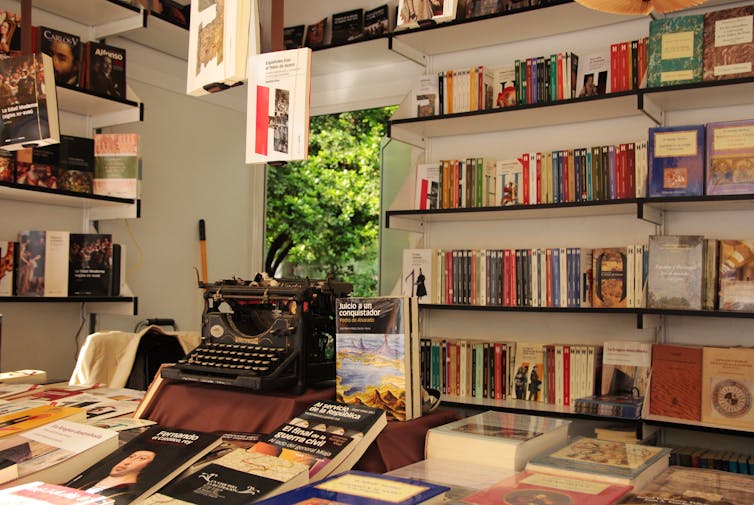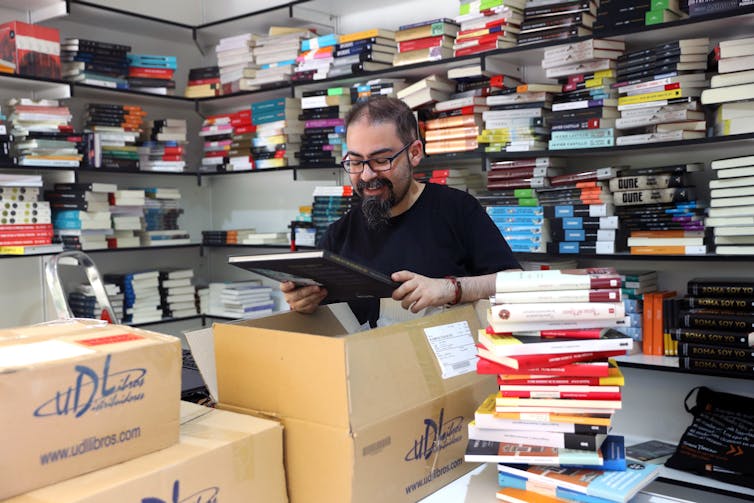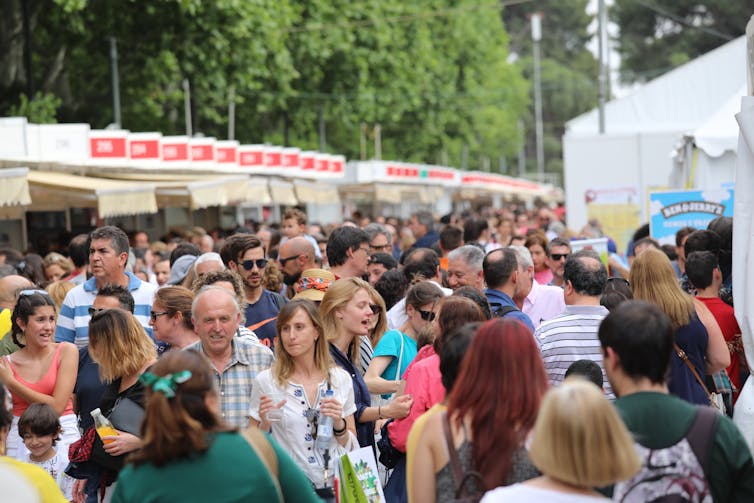The Madrid Book Fair, organized by the Association of Businessmen and Businesswomen of the Book Trade of Madrid, is a fair for publishers, booksellers and distributors. They arrive at the 81st edition eager to repeat the experience of past years – in 2019 it received more than two million visitors. Although the previous edition was held last fall, it did so with restrictive capacity measures due to the pandemic situation, which caused lower attendance.

What is published in Spain
The Spanish publishing sector has marked this event on the calendar because it is a good time for sales. According to data from the Federation of Publishers Guilds, publishing is a sector that supports 50,000 jobs. In addition, the activities associated with the distribution chain place Spain in 18th place in the world in this regard.
The sector accounts for 30% of cultural GDP and its approximately 3,000 publishers publish 90,000 titles each year, which means that the novelty tables have 246 new books available every day. Spain is the fifth country in Europe that publishes the most titles and the ninth in the world.
Every publisher knows that a publisher must be kept alive. To do this, several new items must be published each year. Spanish publishers print an average of 3,500 copies per title and, most of them, about ten titles a year.
The first thing a distributor asks a publisher is how many new titles they plan to put out in a year. This can lead the editor to search for a title locomotivethat is to say, a book that has a certain economic viability and that can boost the rest of the titles that either the publisher brings out because they suppose a bet or because there is a need to stay active.


We cannot forget either that it is estimated that, of those 3,000 publishers, about 800 are inactive. The distributor only accepts active publishers, that is, those that secure several titles during the year, because in the news tables it does have an impact for the buyer that that publisher shows signs of being in shape.
In addition, in the university and scientific edition, teachers are required to publish to advance their research career. This causes that some publishers have seen the business of charging the author to get the work of him. We are facing a great paradox: the agencies that assess the research quality of teachers assume that the ISBN, as a commercial number, offers guarantees of editorial quality, although the ISBN agency itself warns that it is not mandatory and that it is not It is a mark of quality of the work.
It is also important to note that, of those 3,000, there are only thirteen publishers that have published more than 700 titles. In addition, of the 200 million that are printed, some 40 million copies remain in the warehouses of the publishers themselves. These numbers are a sign of the business concentration that also affects this sector.
Another very interesting aspect of the sector is that it is holding up well to the digital challenge and piracy. The digital was a fashion a few years ago, and all the doomsayers envisioned a future without paper books. But for some time, digital production has been around 20% of the total. We will have to see what happens in the coming months with the rise in prices and the contraction in paper production.
It is true that, in academic publishing, being able to consult works digitally, works that would otherwise be very difficult to access, greatly helps the researcher. To the news reader and best sellers he also seems to like the format.
The Publishers Guild asked readers how they accessed digital content giving the opportunity to indicate different responses. 43% declared paying for them, but also 60% of the total admitted accessing books through free downloads or 40% through loans from friends. 30% of those readers admitted to not knowing the difference between an illegal download page and a legal one.
What is read in Spain
To all this, are there enough readers in Spain? Is it a reading country or do we love to give books away? 20% of the books purchased are for gifts.
Let’s advance a possible answer, and it is affirmative to both questions. According to the relationship between the percentage of readers, buyers and copies sold (and exported to other countries), we can conclude that Spain has a good reading level and an acceptably powerful industry.
In the world there are about 600 million Spanish speakers (7.8% of the population) and in 2050 there will be 754 million. Mexico, Argentina and the United States are the main importing countries of Spanish books.
As for reading, the most recent data available is from 2021, thanks to the report on reading habits of the Federation of Publishers. The 2020 lockdown caused an increase in sales and readership, and this increase was consolidated in 2021.


Bookstores continue to be the preferred place for Spaniards to buy books, with a very important growth in internet sales. 68% of Spaniards read books: 52.7% consider themselves weekly readers (with an average of 7 hours and 25 minutes of reading per week), and 11.7% monthly readers. 35.6% of Spaniards state that they never or almost never read.
The robot portrait of the Spanish reader corresponds to a woman between 40 and 50 years old with higher education, a good fact for publishers to take into account.
The publishing industry seems to be in good health, responding well to the challenges of the digital age and contributing its grain of sand to the country’s economy and good cultural climate.
But you must not forget your challenges: there is a very high percentage of Spaniards who do not read. There is still a lot of room for improvement.![]()
![]()
This article was originally published on The Conversation. read the original. Pablo H. Velasco QuintanaEditor of CEU Ediciones and professor of cultural journalism, CEU San Pablo University
–


